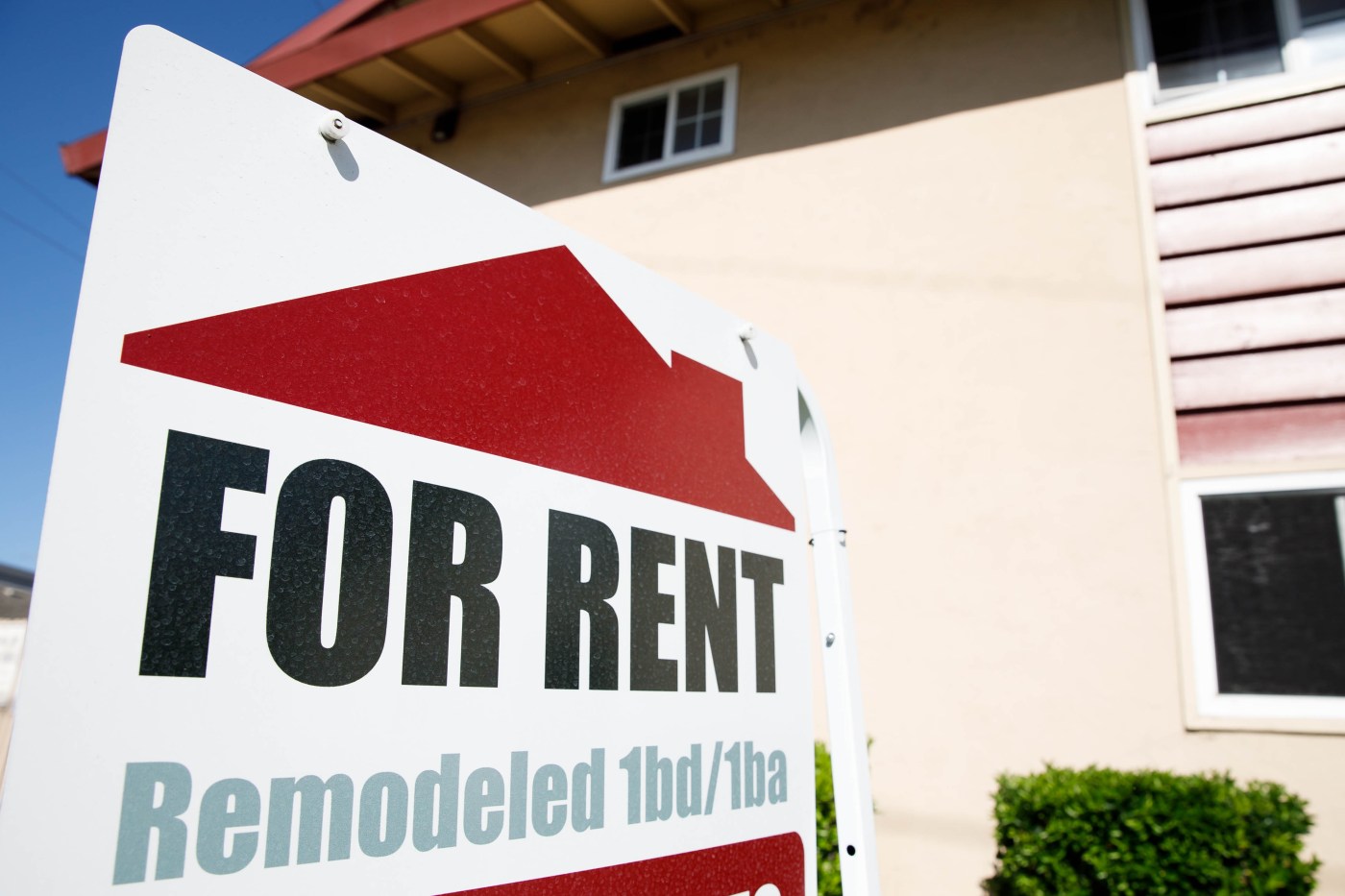Should cities and counties be allowed to impose strict rent caps on all types of housing? That’s the question Proposition 33 will ask California voters when mail-in ballots go out early next month.
Currently, state law limits most rent control ordinances to older apartment buildings. It also prevents local officials from telling landlords how much they can charge renters upon moving in. If approved, Propostion 33 would do away with those restrictions.
Backers of the ballot measure say expanding rent control is desperately needed to ease the burden of California’s steep housing costs. Opponents, meanwhile, argue it would exacerbate the state’s housing shortage by stalling new construction and pushing rentals off the market.
With housing costs now a major talking point in the presidential race, the Proposition 33 debate only stands to intensify as election day approaches.
“There is no question that there’s a much more visible level of debate and a much stronger level of public opinion on housing issues than there has been in many years,” said Dan Schnur, a political science professor at UC Berkeley.
This all sounds familiar. Haven’t I voted on this before?
Yes. Proposition 33 seeks to overturn the Costa-Hawkins Act, which prohibits local rent control on apartments built after the law took effect in 1995. It also exempts most single-family homes and condos, prevents rent caps on vacant units for lease and froze existing rent ordinances at the time the law was enacted.
As rents have soared over the past decade, tenant advocates have organized multiple efforts to repeal Costa-Hawkins. Previously, they sought to overturn the law with ballot measures in 2018 and 2020. But both failed by nearly 20-point margins after opponents portrayed the initiatives as housing killers.
Does the measure have a chance this time around?
Tenant advocates note that rising housing costs across the country have thrust rent control into national focus, with Democratic presidential nominee and Berkeley native Vice President Kamala Harris — who has not endorsed Proposition 33 — vowing “to cap unfair rent increases.”
“This time could be different for this measure,” said Joseph Geevarghese, executive director of Our Revolution, a progressive group backing Proposition 33.
A poll released this month by the Public Policy Institute of California found 51% of likely voters support the measure, while 46% oppose it. Statewide measures must get a majority of the vote to pass.
Still, Schnur is skeptical the broader discussion will ultimately translate to enough support for Proposition 33, adding advocates might have had a better chance with a “less ambitious measure.”
What could Prop. 33 mean for the Bay Area?
Should Proposition 33 pass, most Bay Area cities and counties would need to adopt or update local ordinances to expand rent control. More than a dozen local cities have rent caps, including San Jose, Oakland, Mountain View and San Francisco.
In Berkeley, Proposition 33’s passage would trigger parts of the city’s rent ordinance that are currently unenforceable under Costa-Hawkins, according to Leah Simon-Weisberg, chair of the Berkeley Rent Board. Rent control would immediately extend to many vacant units, single-family homes and newer apartment buildings, she said.
Since 2020, a statewide rent control law has also capped rent increases at between 5% and 10% a year, depending on inflation. It mainly applies to apartment buildings that are at least 15 years old.
In San Jose, Mayor Matt Mahan has joined 22 other mayors — mostly from Southern California — in opposing Proposition 33. Some argue the measure could empower development-averse cities to adopt rent caps so strict that building new multifamily housing would become effectively impossible.
The offices of Oakland Mayor Sheng Thao, Berkeley Mayor Jesse Arreguin and San Francisco Mayor London Breed did not respond to questions about their positions.
What do experts have to say about rent control?
Costa-Hawkins supporters point to academic research finding that rent control — particularly on newer apartments — can discourage construction because it’s harder for developers to turn a profit. Studies also show that in cities with rent control, tenants are less likely to move, and some landlords opt to stop renting out their units. Fewer rentals can mean higher prices for units without rent control.
The state’s Legislative Analyst’s Office also found expanding rent control could lower rental property values and shrink local tax revenue by tens of millions of dollars a year.
Proposition 33 backers counter that local officials should be free to prioritize protecting tenants from rent hikes and displacement.
Related Articles
Sam Liccardo’s congressional bid collects another $1.5 million from billionaire Michael Bloomberg
Letters: Price recall | Violence abroad | Trump optics | Priority No. 1 | Gender shouldn’t matter
Kamala Harris seeks boost from Oprah as part of digital-first media strategy
More than half of U.S. voters tell pollsters Taylor Swift’s endorsement will benefit Kamala Harris
Editorial: Elect Shiloh Ballard to only opening on troubled Valley Water board
Who’s putting the money behind Prop. 33?
The Proposition 33 campaign, like the two previous efforts to repeal Costa-Hawkins, is being bankrolled by the Los Angeles-based nonprofit AIDS Healthcare Foundation. The group has been criticized for using money it receives through a federal prescription drug program on various ballot initiatives.
As of Friday, the organization had reported pumping close to $40 million into the Proposition 33 campaign. In opposition, the state’s largest real estate groups and their allies have put up more than $65 million. Both sides have funded a barrage of recent TV and digital ads.
At the same time, the California Apartment Association is spearheading a separate November ballot measure, Proposition 34, which was written to deter the Healthcare Foundation from spending big on future ballot measure campaigns.












